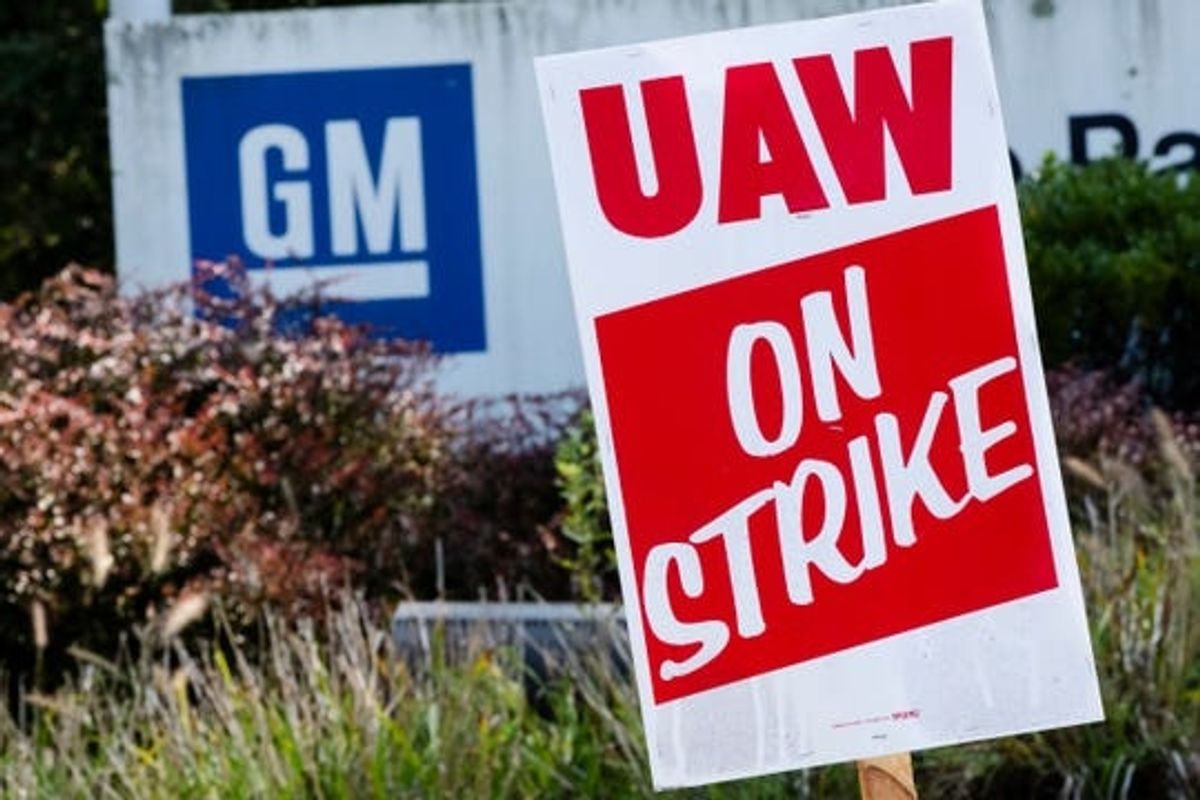In 2009, General Motors filed for bankruptcy, marking "the end of an era," according to CNN. The prolific auto manufacturer received $19.4 billion in government bail-out money and, yet, they still had to slash 20,000 jobs from their plants across the U.S.
If there was one group that didn't want to see this happen, it was the United Auto Workers (UAW), GM's unionized workforce.
To help save the company, the Union made a deal with GM. They allowed GM to break union agreements and bring on new employees who would be paid half of what their veteran co-workers earned. These new employees also weren't eligible for the company's once-renowned pension plan. Later, GM brought on a number of temporary workers who received less pay, fewer benefits, and less job security than their unionized counterparts.
This setup certainly helped bring GM back to life — nowadays, the automaker is raking in record earnings. But the workers responsible for this revival feel left behind.
That's why 50,000 of them have gone on strike to demand their share of the profits.
What do they want?
In short, the UAW believes it's unfair that "temporary" and new workers do the same job as their colleagues for much less pay (and worse benefits).
They want to boost pay for entry-level workers, which now sits at less than $20 per hour. The union wants these new staffers to have a chance at reaching peak pay, nearly $30 an hour, by their third or fourth year of employment. Now, it takes about eight years to reach that pay rate.
UAW Vice President Terry Dittes summarized the Union's demands: "We are standing up for fair wages, we are standing up for affordable, quality health care. We are standing up for our share of the profits. We are standing up for job security for our members."
Additionally, union negotiators are seeking improved pensions, the retention of the worker's current healthcare plan which only requires workers to pay 4% of costs (initially, GM wanted to increase the portion of healthcare that workers paid for to 15%), and assurances that four factories slated for closure in Michigan, Ohio, and Maryland would be kept open.
How will they get it?
Without 50,000 people on the job, GM's poised to lose between $50 million and $100 million per day. GM's stock has already taken a hit, too — pre-market trading at the start of the strike showed a 3.6% drop in stock value.
What's GM's side?
Auto sales in the U.S. have taken a downturn after a boom that stretched from 2009 to 2016. That increase in sales marked the longest span of growth for the industry since the Great Depression.
Now, though, people are buying fewer vehicles. And dealers have started ordering fewer vehicles to put on the lot because they're sitting for longer and longer. This lull obviously hurts the automaker — and they want to compensate by cutting costs.
Furthermore, GM has to compete with Toyota, Honda, and other foreign automakers that operate non-union plants in states where the minimum wage is lower (generally $15 to $18 an hour).
GM has also made some counteroffers to the UAW's demands. They have offered to put $7 billion into eight of their plants. They also want to hire 5,400 new staffers. But the UAW doesn't like the automaker's plan for healthcare, nor do they want as many temporary workers on-site as the company said they'd bring in.
The automaker has also promised they'll pay an $8,000 signing bonus to new workers, should the union accept its deal. The four-year contract would also include wage gains and require the same healthcare contributions from employees as they pay now.
What does it say about corporate benefits?
Conditions for GM's temporary workers have been one of the biggest sticking points preventing the two sides from coming to an agreement. (Non-unionized workers cost GM $13 less per hour than those belonging to the union.)
These not-so-temporary temporary workers, as well as the new workers making less than their pre-bankruptcy coworkers bring a couple key issues to the forefront of the strike:
- Workers want equal pay (and benefits) for equal work - This should be obvious. But GM forced employees to work alongside others doing exactly the same job, for more or less money simply due to the time period in which they were hired.
- Benefits should not be confused with perks - Corporate benefits — specifically healthcare and retirement plans — are key issues in the strike, and workers know how much they're worth. They're not after small, "one-off" perks, they want essential benefits like quality health care that can have a tremendous impact on their bottom line and quality of life.
That these workers are willing to risk so much (striking workers received no pay until day 8 of the strike, and their benefits were at risk) in the short-term, to fight for their security in the long-term says a lot about what workers want from their employers.
They don't want an $8,000 signing bonus as much as they want lasting benefits like healthcare. And above all, they want to be paid as much as the person doing the same exact job right next to them.



